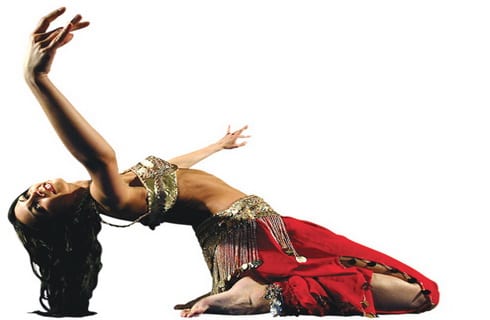Bellydance, with a variety of stylizations and class types to choose from, is a great option for anyone looking to branch out of the typical fitness activities and options. For adult dancers, bellydance may seem less intimidating than other dance styles. For one thing, the majority of professional bellydancers (performers and teachers) don’t start bellydancing until adulthood themselves. Classes are usually a little less formal and there are often recitals to show off what you’ve learned during your class. Bellydance is also known as a great core workout and calorie burner. And while this is true, there are so many more benefits for why including bellydance in your fitness routine is a good idea.
Probably the most positive aspect of learning how to bellydance is how much of a self-confidence and body image booster it is. A study released earlier this year noted that “belly dancers have fewer hang-ups about their bodies. Most women who participate in this torso-driven dance do so because it is fun and they get to perform interesting moves — not because they necessarily feel sexier while doing so.”[1] Ask anyone you know that bellydances and they will likely tell you a similar story. It is probably one of the most open and friendly dance forms, with all shapes, sizes, and ages welcome.
Bellydance is also a great way to work on body awareness and mind-body connection. Learning how to isolate different body parts— whether it is your hips with shimmies and twists, or upper body with undulations or arm waves—requires a lot of concentration, time, and practice. Anyone new to dancing should start by just learning how to move and relax. Isolating different body parts is not easy, and while some movements will come more naturally, others will be a struggle. Learn to relax and then engage the muscles necessary for the movement. Take it slow– quarter or even eighth time will be slow enough for you to focus on the muscle contractions and really get it. When combining the isolations with steps, focus on the foot patterns first and work your way up the body to your hips, upper body, arms, and finally any props you are using (such as veils or finger cymbals.) With all these things going on, your brain is going to get just as much of a workout as your body.
Finally, as you improve and move forward with learning how to dance, you’ll increase your strength and conditioning. Bellydance requires a strong body and physical stamina. Many intermediate/advanced class warm ups have a fair amount of conditioning included to help develop strength, posture, and coordination. This can include squats, push ups, core work and shimmy drills- all of which will get your heart rate up and make you more physically capable to access the muscles you need for isolations and layers.
If you are interested in trying bellydance, Leslie is teaching 6 week beginner sessions at Foot Notes Dance Studio starting in January 2015. Learn more at www.lesliebellydance.com or www.foot-notes.ca/classes/belly-dancing/
[1] http://www.sciencedaily.com/releases/2014/09/140908120718.htm?utm_source=feedburner








